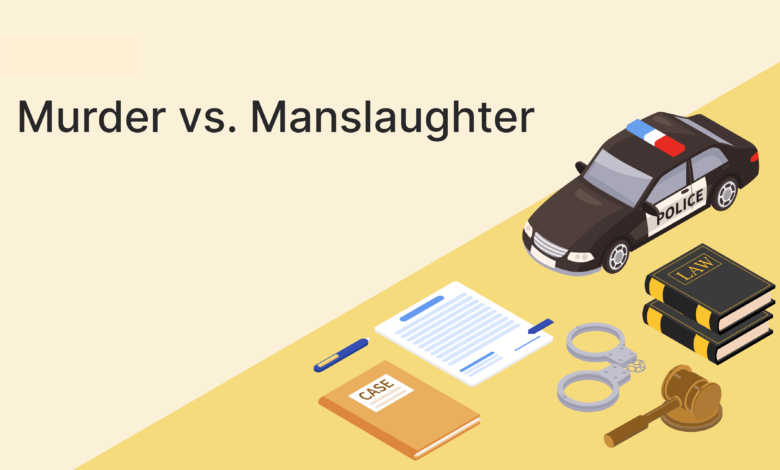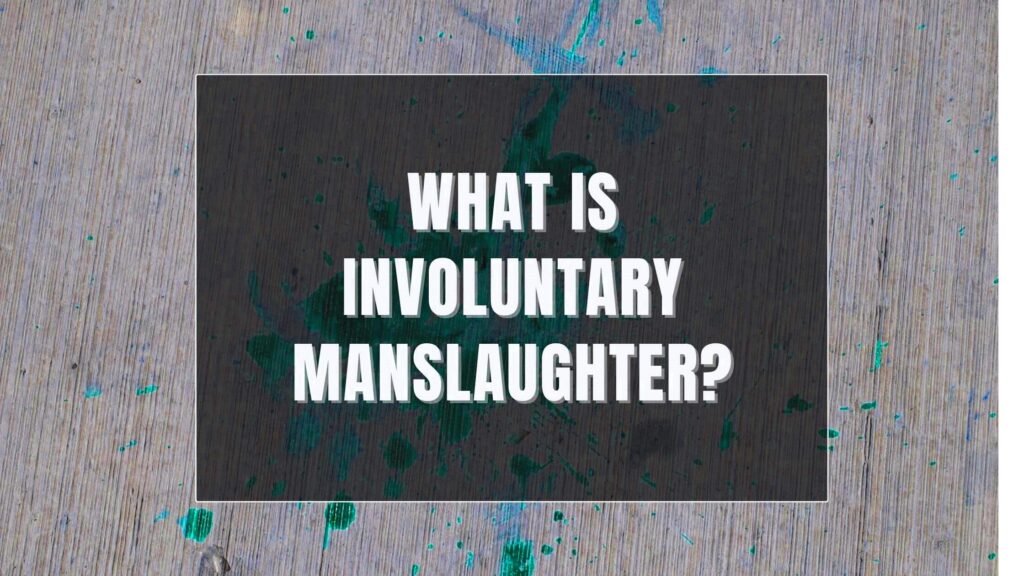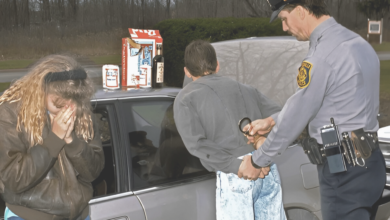Manslaughter definition: Manslaughter vs. Murder?

A killing that violates the law but does not involve malice aforethought—the intention to cause serious injury or death or an extreme and reckless disregard for life—is considered to be a case of manslaughter. Due to the absence of deliberate malicious intent, manslaughter carries a lower level of moral responsibility than either first-degree or second-degree murder.
(However, many people believe that certain instances of felony murder, which is a type of first-degree murder, involve less responsibility than certain instances of manslaughter.) Therefore, despite the fact that both murder and manslaughter are considered to be serious offenses, manslaughter typically results in a lesser sentence than murder does.
The two most common types of manslaughter are referred to as voluntary manslaughter and involuntary manslaughter, respectively.
What Is Voluntary Manslaughter?
People frequently refer to voluntary manslaughter as a “heat-of-passion” crime because it occurs when a person:
- Is strongly provoked (under circumstances that could similarly provoke a reasonable person)
- kills in the heat of passion aroused by the fact that they were killed as a result of being provoked.
In order for there to be “heat of passion,” the person must not have had adequate time to “cool off” from the provocation. A concession made to human frailty is the fact that the killing is not being investigated as a case of first- or second-degree murder. Killers who act in the heat of passion may be guilty of killing intentionally, but the emotional context is a mitigating factor that reduces the moral blameworthiness of their actions.
The archetypal case of voluntary manslaughter involves a scenario in which a husband unexpectedly returns home to discover that his wife has been having an affair. If the husband is driven to such a state of rage by the sight of the affair that he kills the paramour right there the,n, a judge or jury may very well conclude that the killing was an act of voluntary manslaughter on the part of the husband.
What Is Involuntary Manslaughter?

The term “involuntary manslaughter” most commonly refers to an unintentional homicide that results from conduct that is either criminally negligent or reckless. It is also possible to use the term to refer to an unintentional homicide that occurred during the commission of a crime that was not a felony.
When it comes to involuntary manslaughter, the nuances between murder and manslaughter reach their zenith. This is especially true when considering the fact that a death caused by extreme recklessness can be considered second-degree murder.
To illustrate this point, let’s say that Rosencrantz is behind the wheel of a car when he strikes Guildenstern and causes his death. Rosencrantz may be:
Not guilty of a crime at all: If Guildenstern’s family brings a civil suit against Rosencrantz, Rosencrantz may be required to pay damages to Guildenstern’s heirs if the court determines that Rosencrantz was negligent, which means that Rosencrantz did not exercise the level of care that would be considered reasonable under the circumstances.
Convicted of involuntary manslaughter: It is possible that Rosencrantz could be found guilty of involuntary manslaughter if he acted in a way that was considered to be more than just ordinary negligence. One example of this would be if he drove while under the influence of alcohol. (Vehicular manslaughter is treated differently under the law in many states due to the existence of separate statutes.)
Convicted of second-degree murder: Second-degree murder would be the appropriate charge in the event that Rosencrantz’s actions revealed such a flagrant disregard for the value of human life that a judge or jury concluded he acted with malice aforethought. For instance, a judge or jury could find Rosencrantz guilty of second-degree murder if he not only killed Guildenstern as a result of his drunk driving but also did so after his license had been taken away for several previous convictions of drunk driving. In this scenario, Rosencrantz’s license had been taken away for several previous convictions of drunk driving.
Read More: When Should I Hire an Arizona Car Accident Lawyer?
Murder vs. Manslaughter: Case Examples
Let’s take a look at some real-world scenarios to better understand the distinctions between homicide and manslaughter.
“Provoked” Killing
The Facts: Quick Boyle is out and about, making his way along a busy street. Clay accidentally runs into Boyle, but he does not apologize and continues walking in the same direction. Boyle, infuriated by Clay’s impolite behavior, draws his weapon and promptly shoots and kills Clay.
As a result of Boyle’s intentional killing of Clay, there is a good chance that he will be found guilty of murder in the second degree. It is highly unlikely that a judge or jury will come to the conclusion that the killing was premeditated, which is necessary in order to classify the shooting as first-degree murder. On the other hand, this was not a case of a killing committed in the heat of passion, which would constitute voluntary manslaughter. Even though Boyle may have been provoked in some way, the circumstances were not so extreme that they would have caused a rational person to lose control of their emotions.
Intentional Act; Accidental Result
Marks and Spencer are arguing while standing next to each other in a bookstore at the top of a flight of stairs. The subject of their debate is the appropriate way to interpret free will in accordance with Hobbes’ philosophical tenets. The argument reaches its crescendo when Spencer points a finger at Marks, and Marks responds by pushing Spencer backward. The argument has become increasingly animated. The force of the push is sufficient to send Spencer tumbling down the flight of stairs. Due to the injuries he sustained as a result, Spencer passed away.
In all likelihood, Marks would be found guilty of involuntary manslaughter in this case. When he shoved a person who was standing near the top of a staircase, he acted in a criminally negligent way. However, given the circumstances, it does not appear that his behavior was so careless as to demonstrate extreme indifference to human life.
Such a demonstration would have been required for the crime to be classified as murder in the second degree. If the evidence had indicated that Marks intended to kill Spencer with the push, a judge or jury would have had to decide whether the level of provocation made the homicide a case of voluntary manslaughter. If the evidence had not indicated that Marks intended to kill Spencer with the push, the case would have been considered a case of murder.
Cooling-Off Period
When Lew Manion returned home, he discovered that his wife, Lee, had been severely beaten and sexually abused by their son. Lee is transported to the hospital by Manion. While they are traveling, Lee confides in Manion that the person who attacked her was Barnett, the proprietor of a tavern that she and Manion frequently frequent. A little over four hours later, after Manion has driven Lee home from the hospital, he goes to a gun shop and purchases a weapon. After that, Manion goes to the tavern, where he pulls out a gun and kills Barnett.
Manion could be found guilty of first-degree murder due to the fact that he had time to think about what he was going to do before buying the gun, which is evidence of premeditation and deliberate thought. Even though Manion was still furious at the time he acted, a judge or jury might find that the heat of passion had cooled, making the alternative of voluntary manslaughter a slightly less likely option. This is because the judge or jury might decide that Manion was no longer acting out of passion.
Read More: How to Start a Personal Injury Case in Arizona
What Is the Punishment for Manslaughter?
When convicted of manslaughter, defendants frequently face incarceration. An appeals court in New York upheld the following sentence in a case involving driving while intoxicated in which there was a collision, and the defendant’s passenger died as a result: three to nine years for second-degree manslaughter, concurrent with two to six years for second-degree vehicular manslaughter. (People v. Yanus, 13 A.D.3d (2004)) As an illustration, this decision was made in 2004.
Keep in mind that the sentence in any case depends not only on the laws of the jurisdiction but also on the court’s evaluation of the circumstances and the defendant. This is something that should be kept in mind.












One Comment